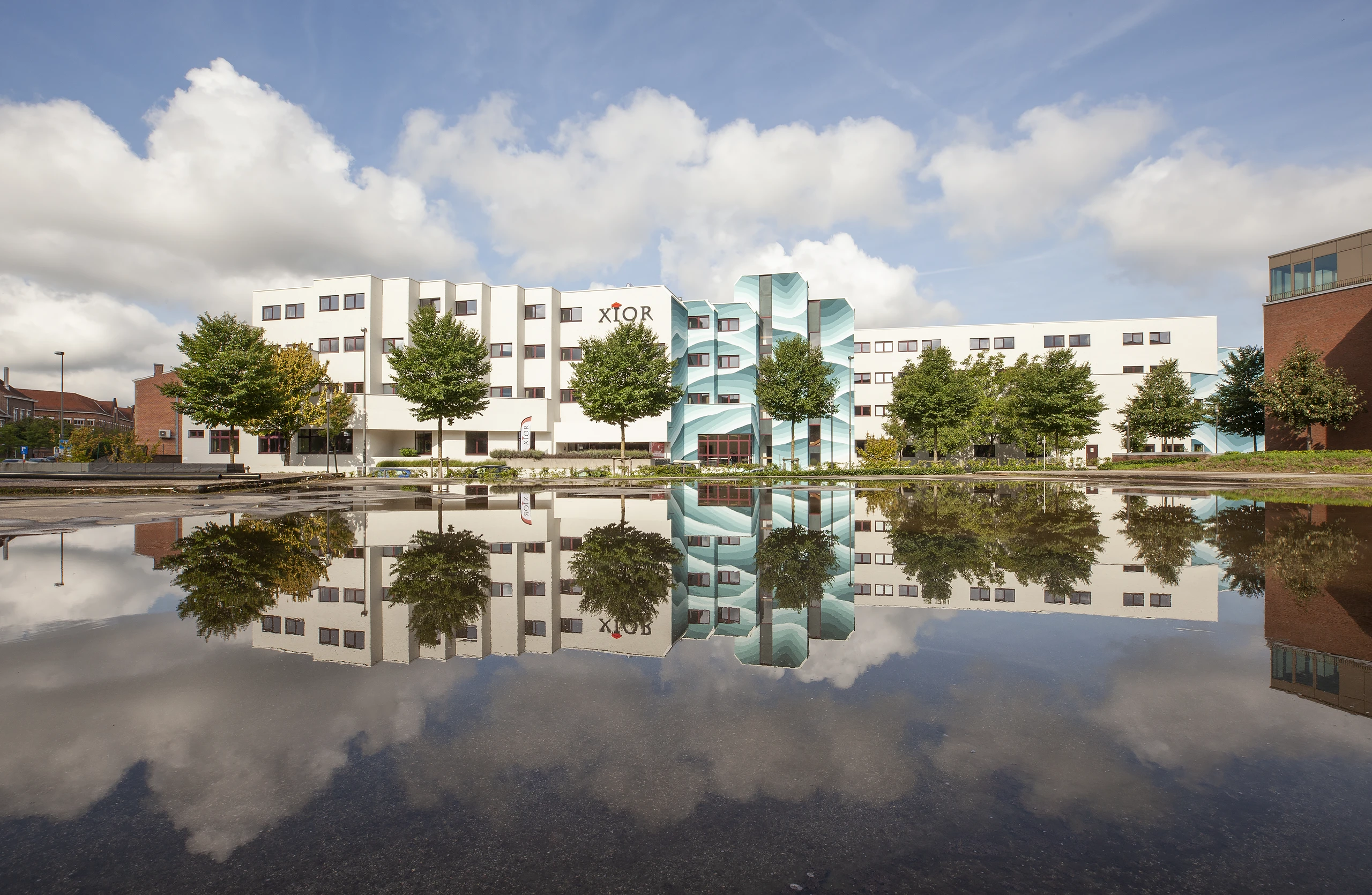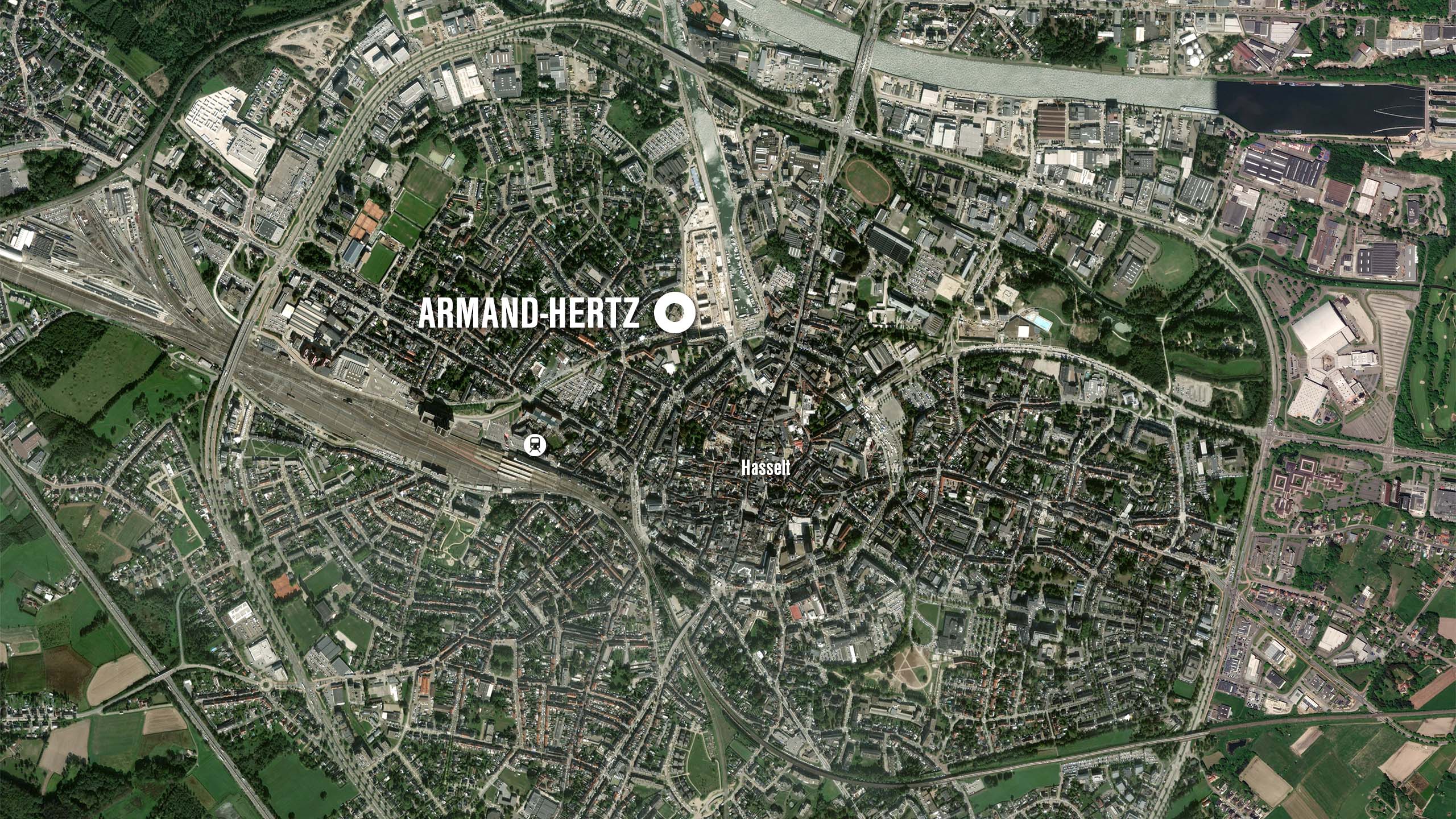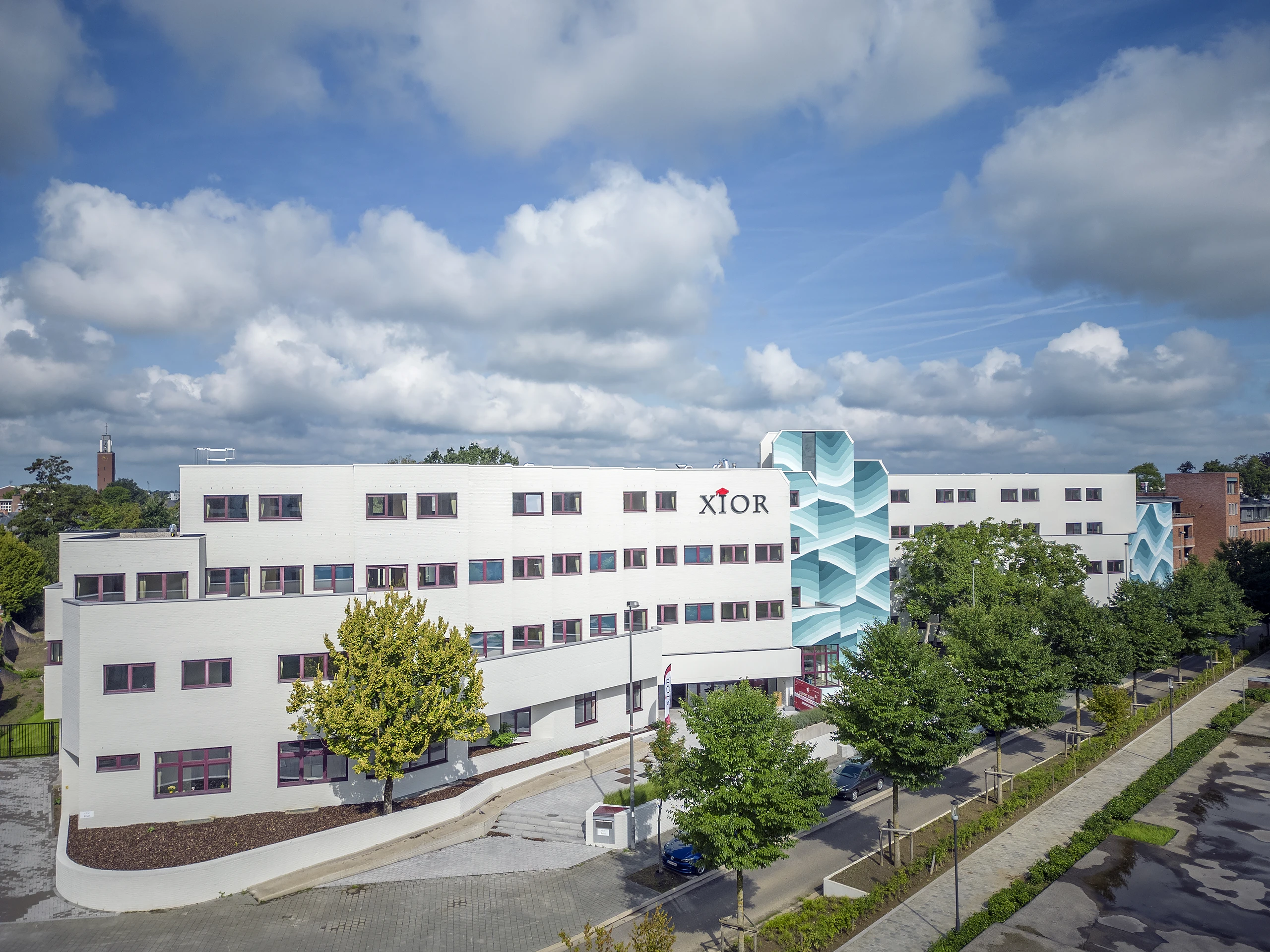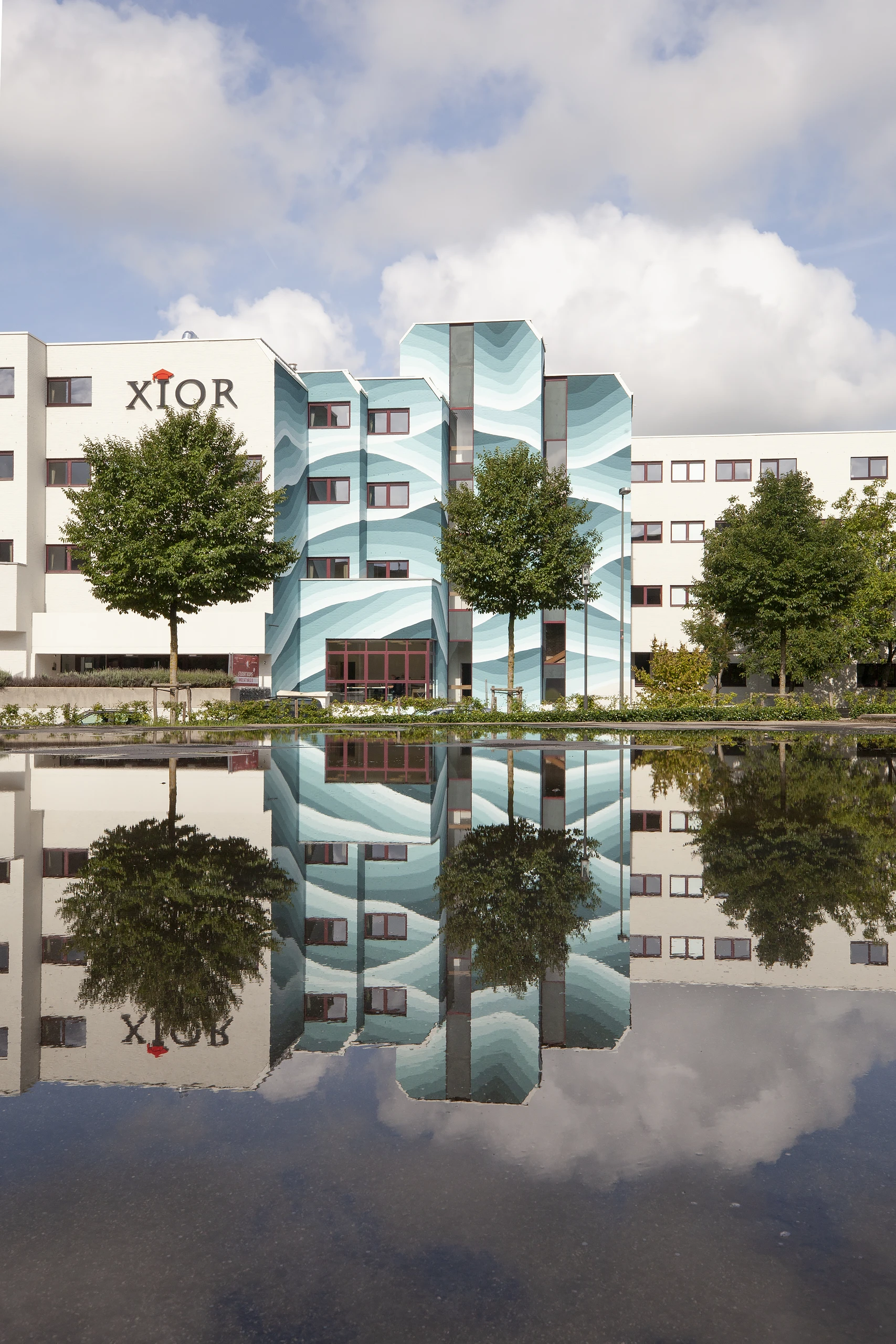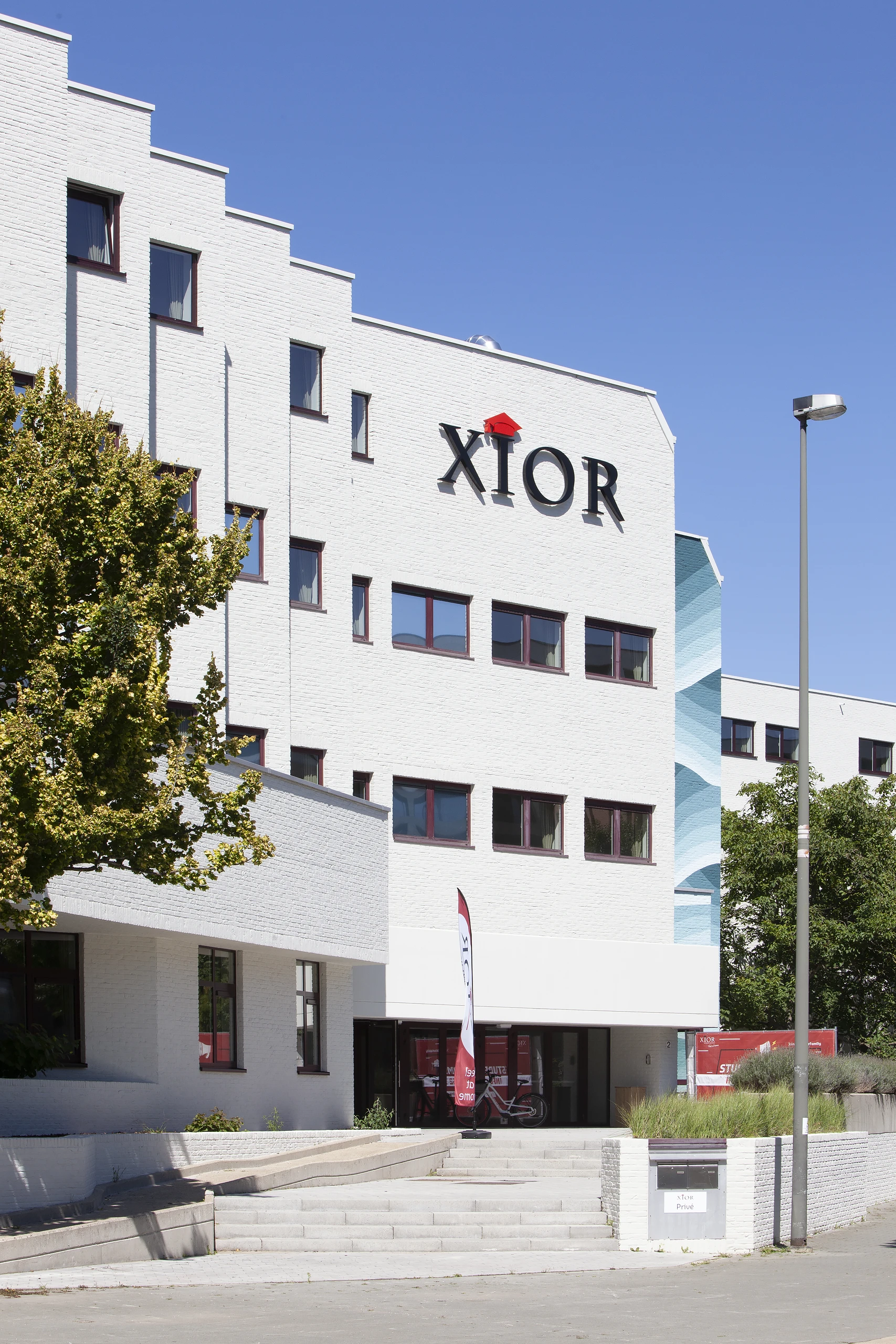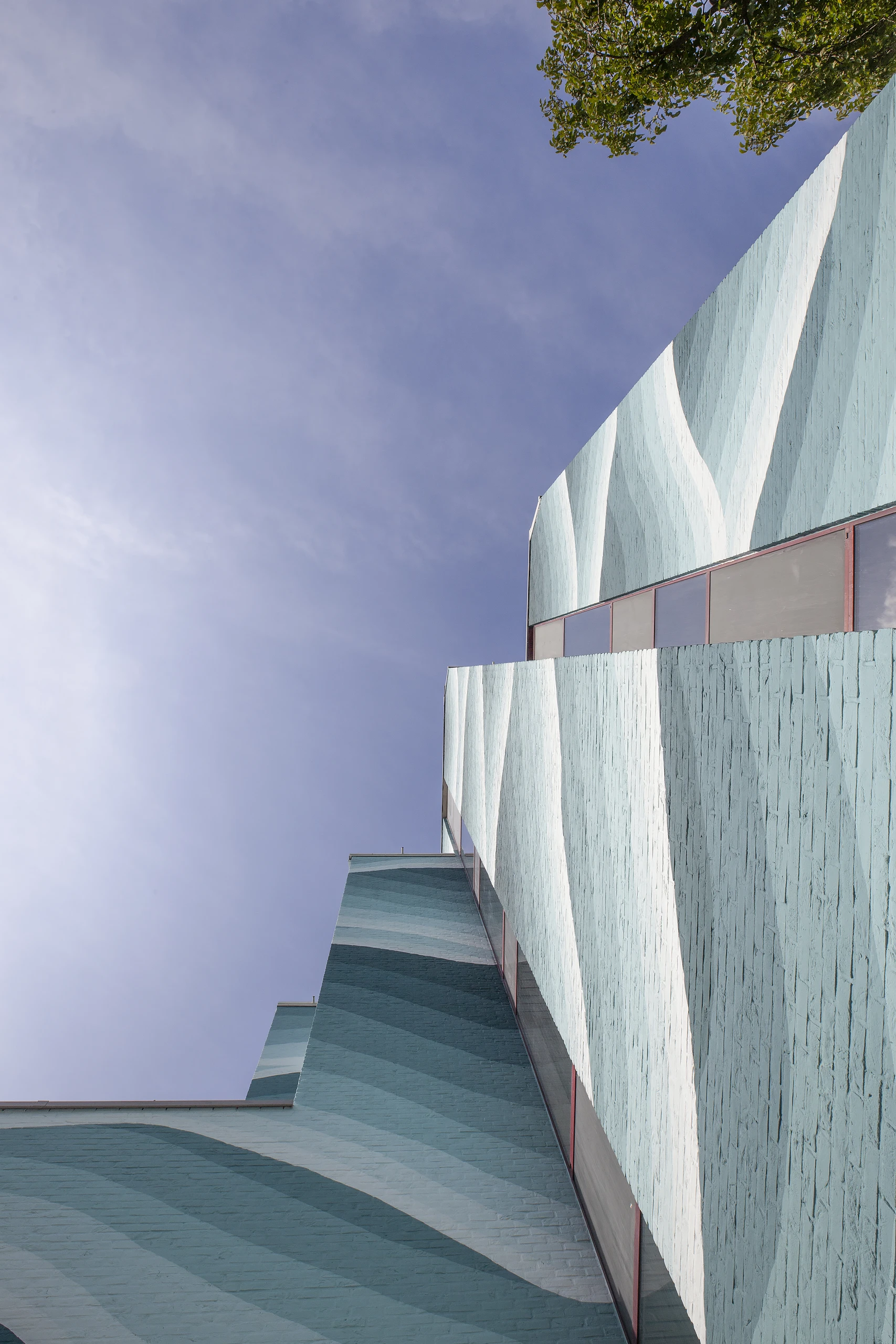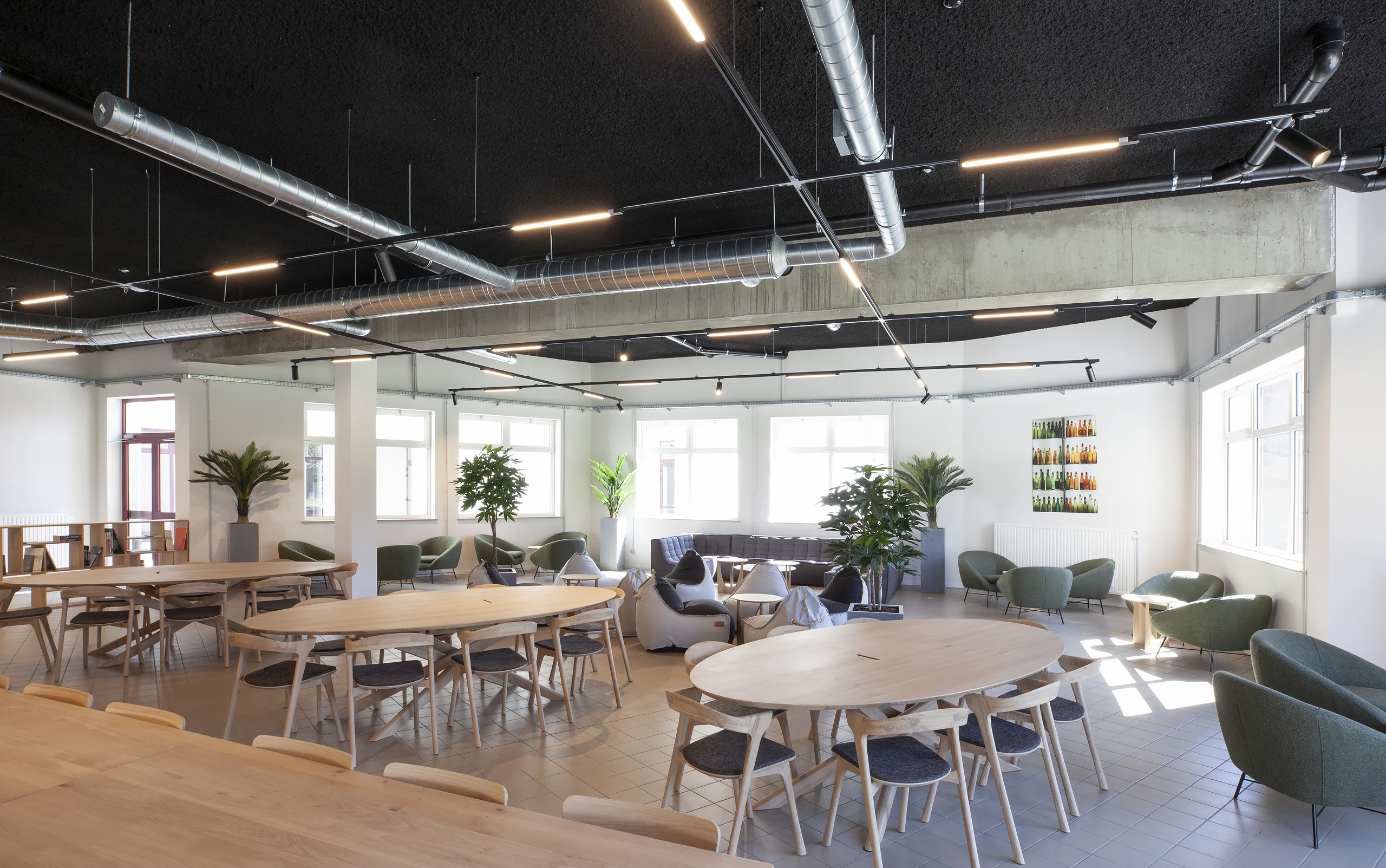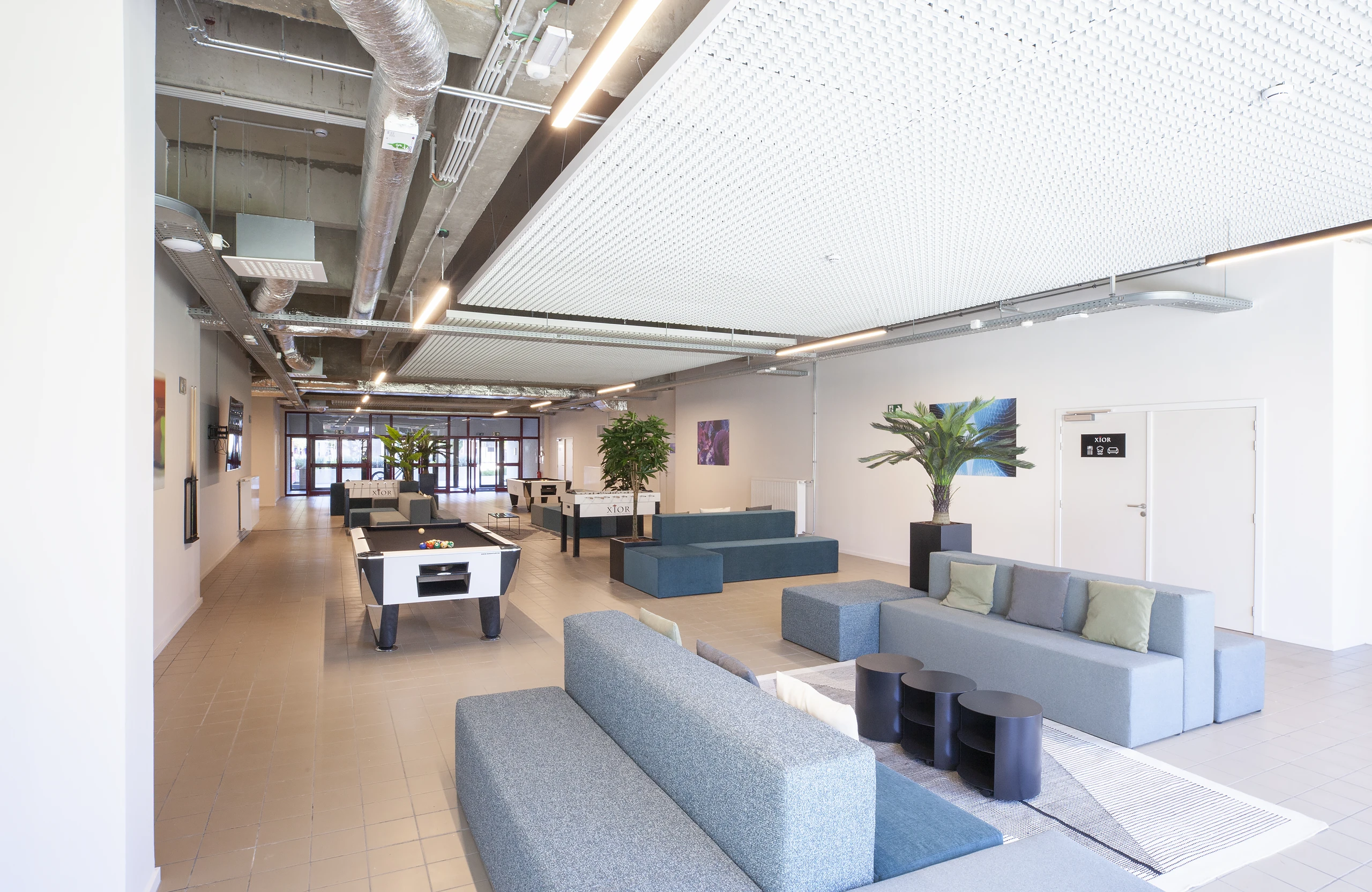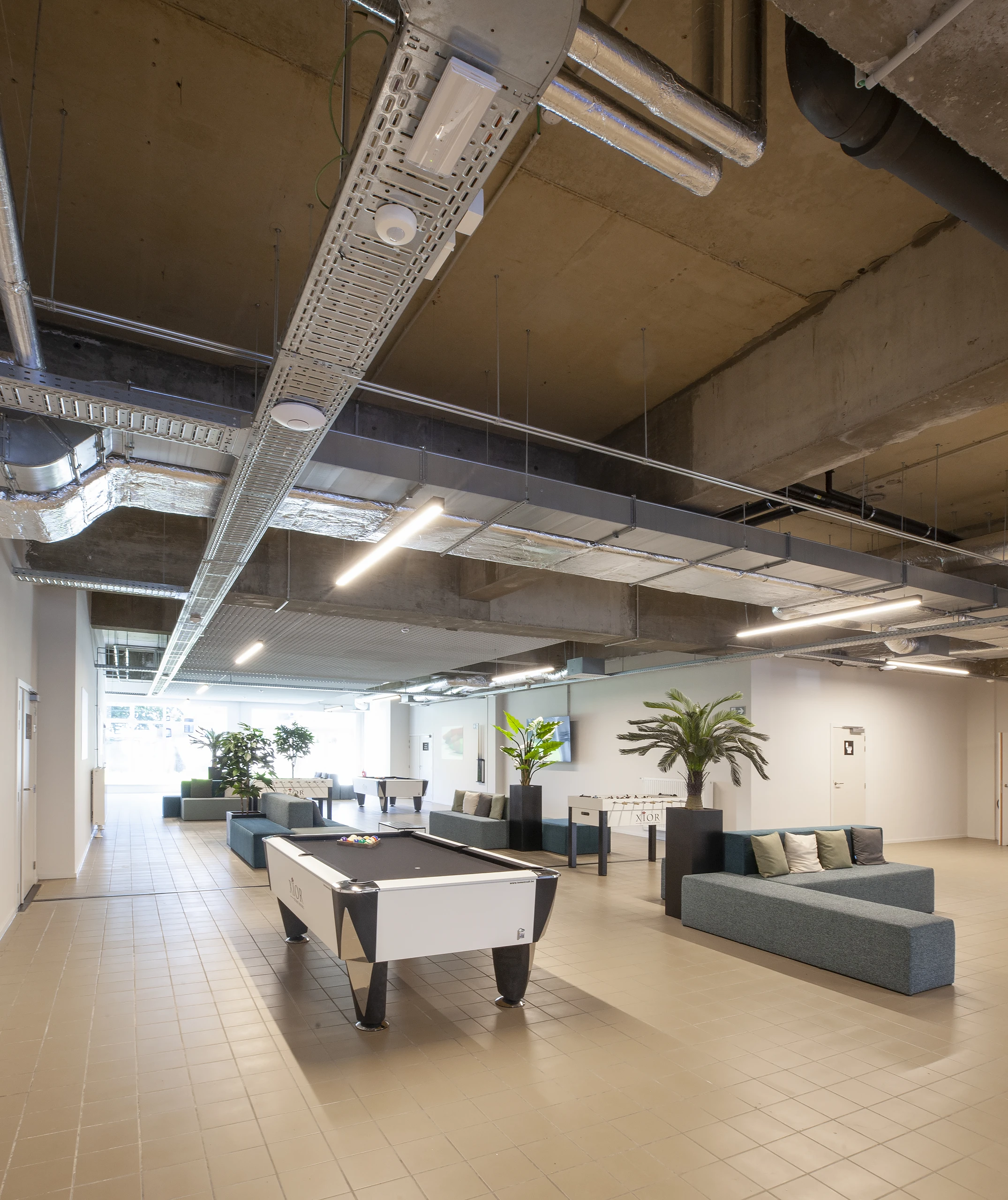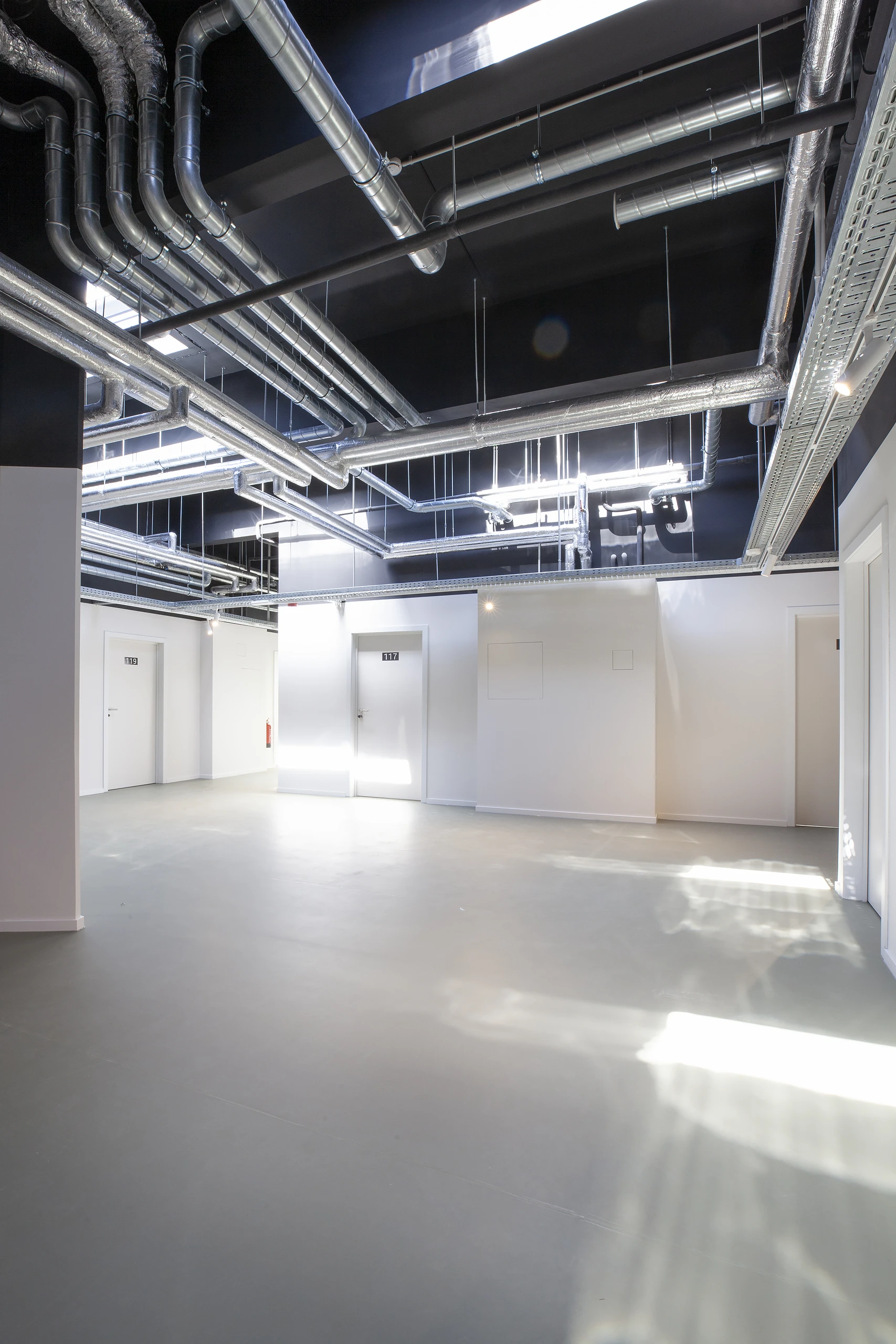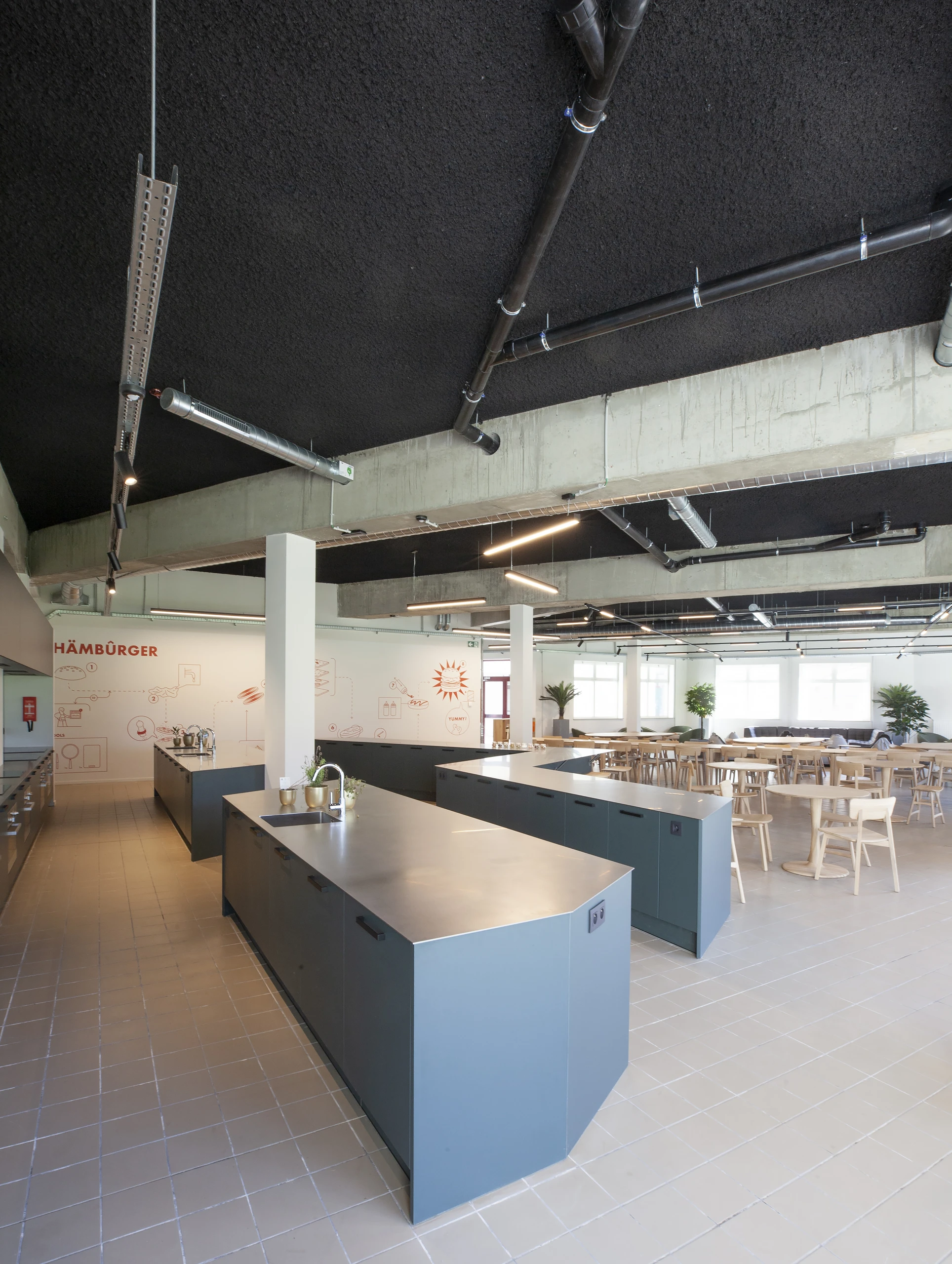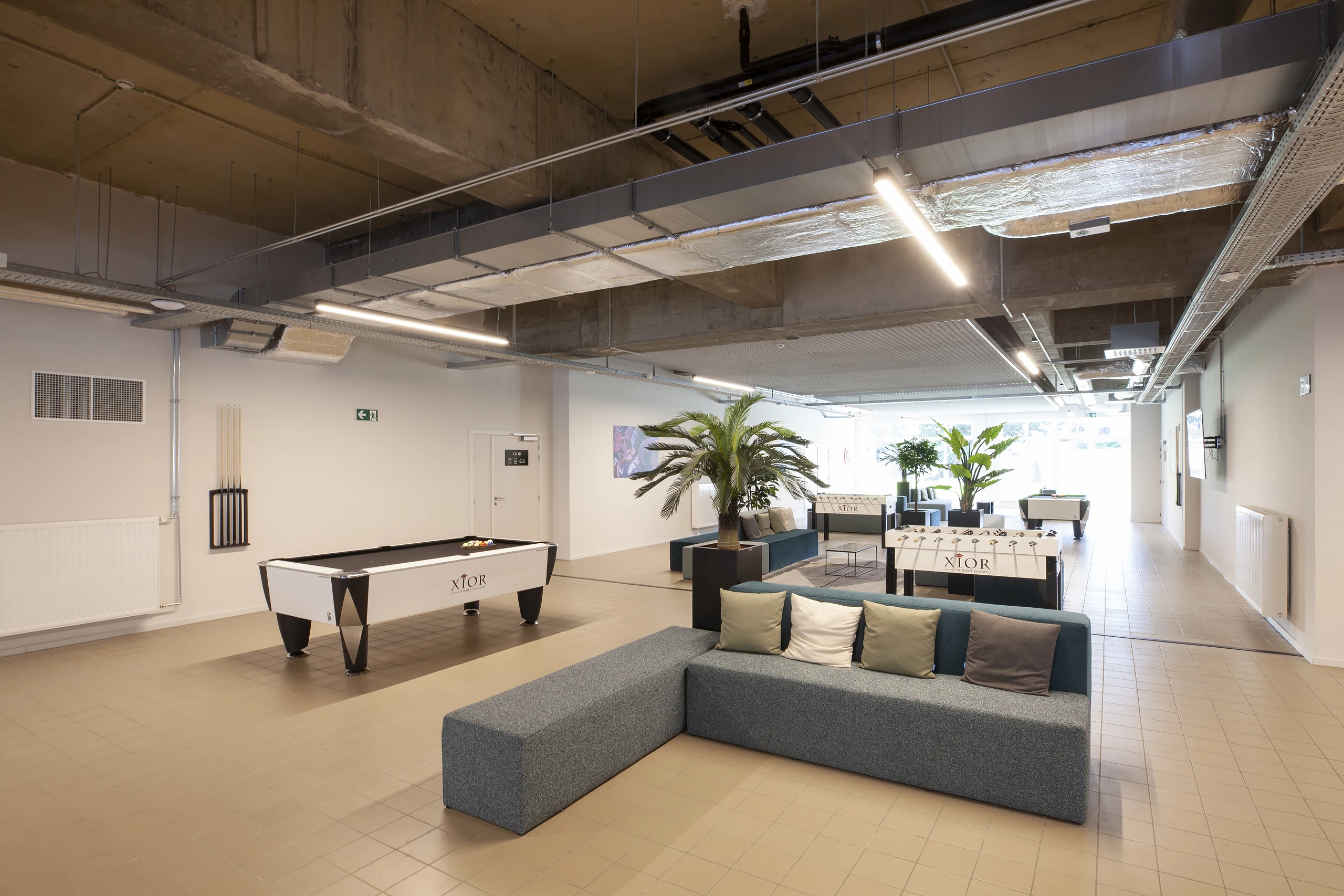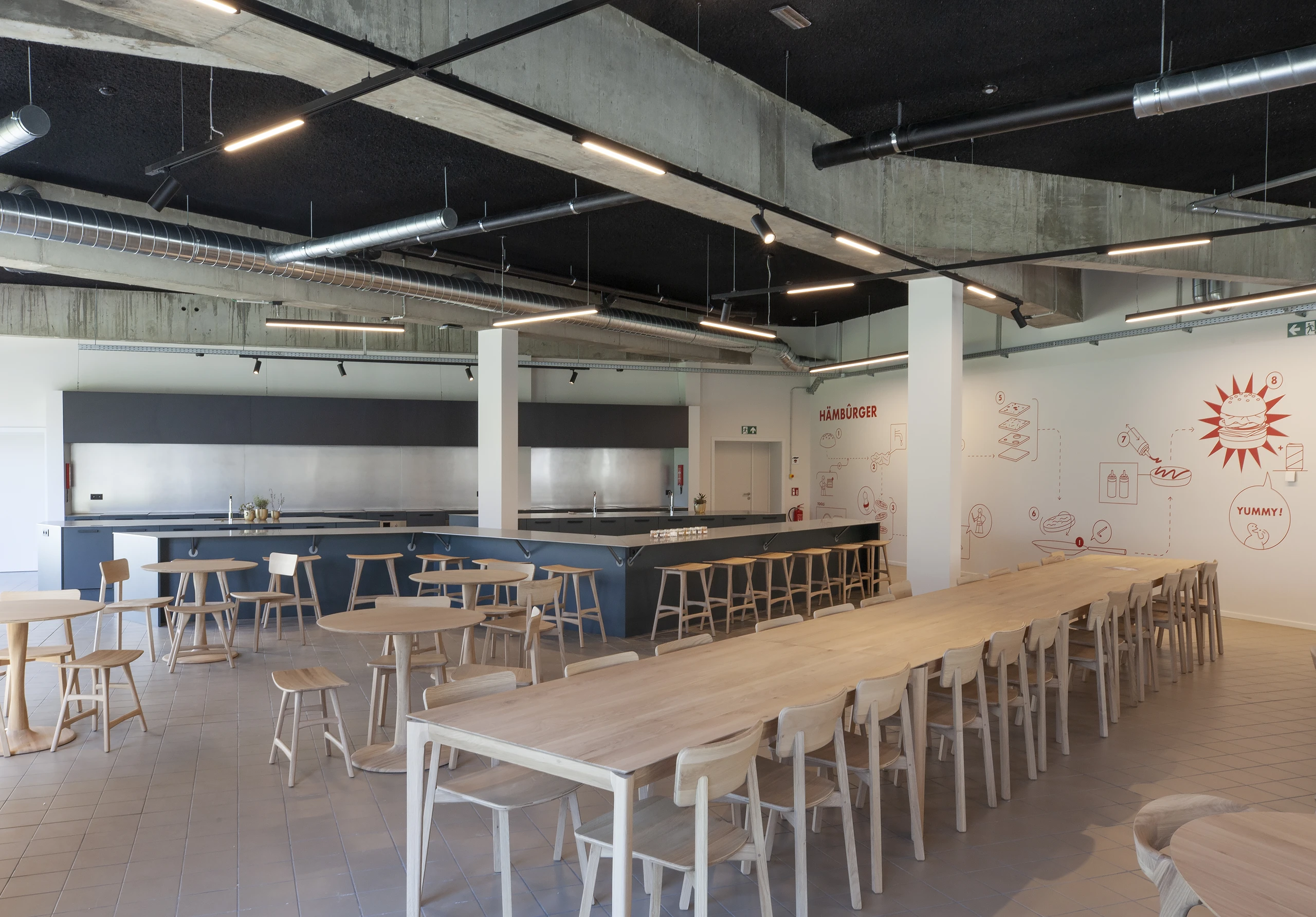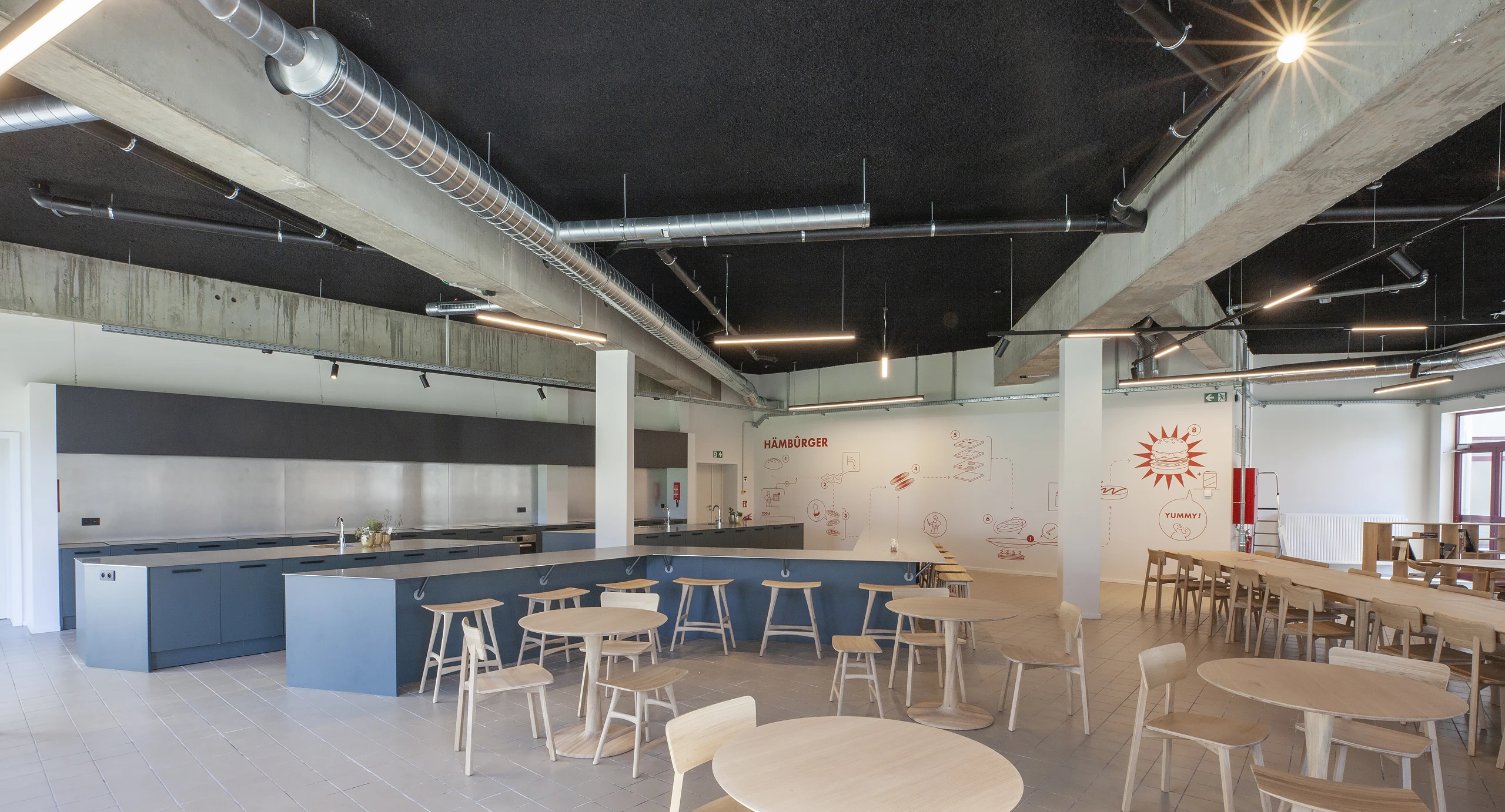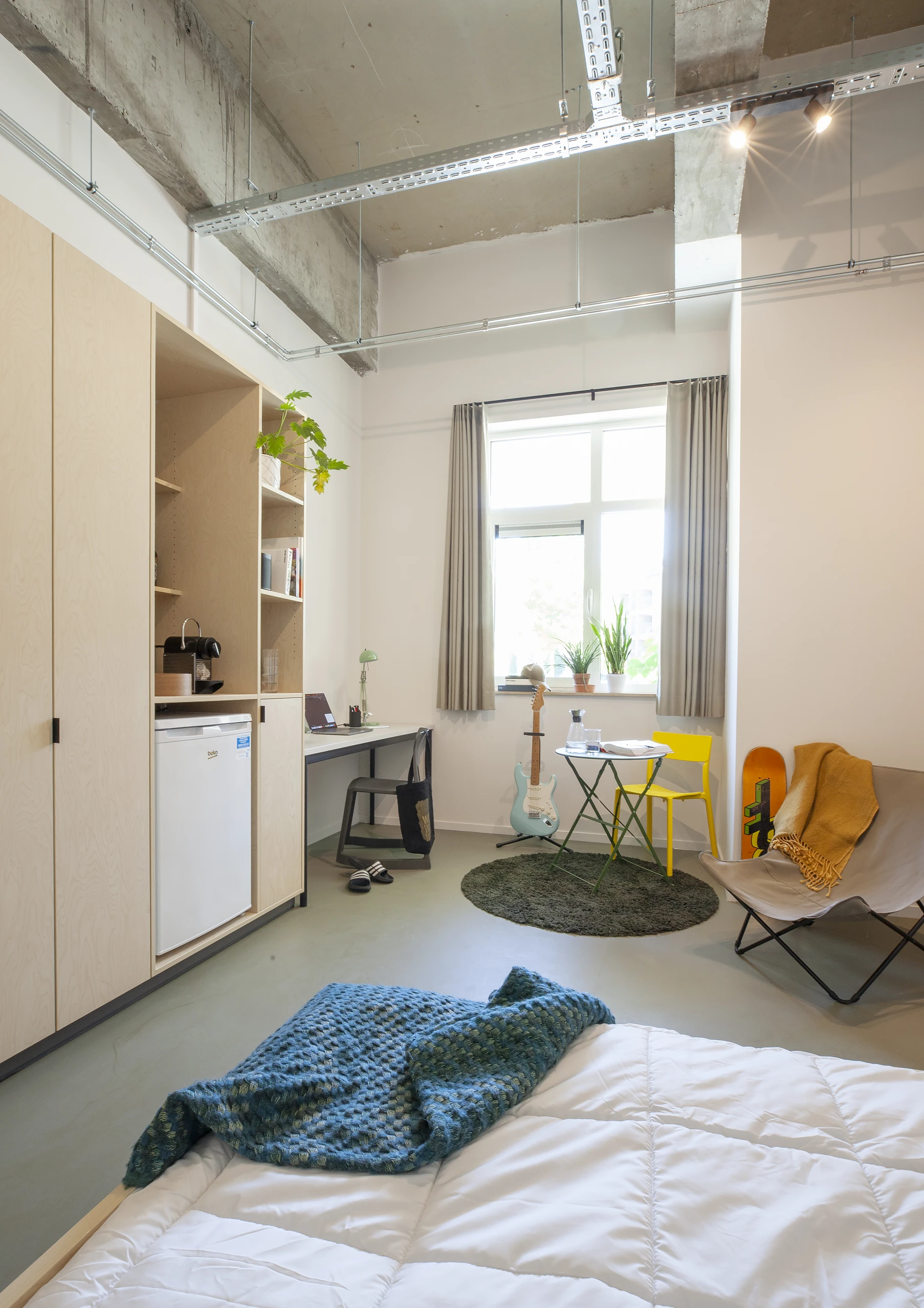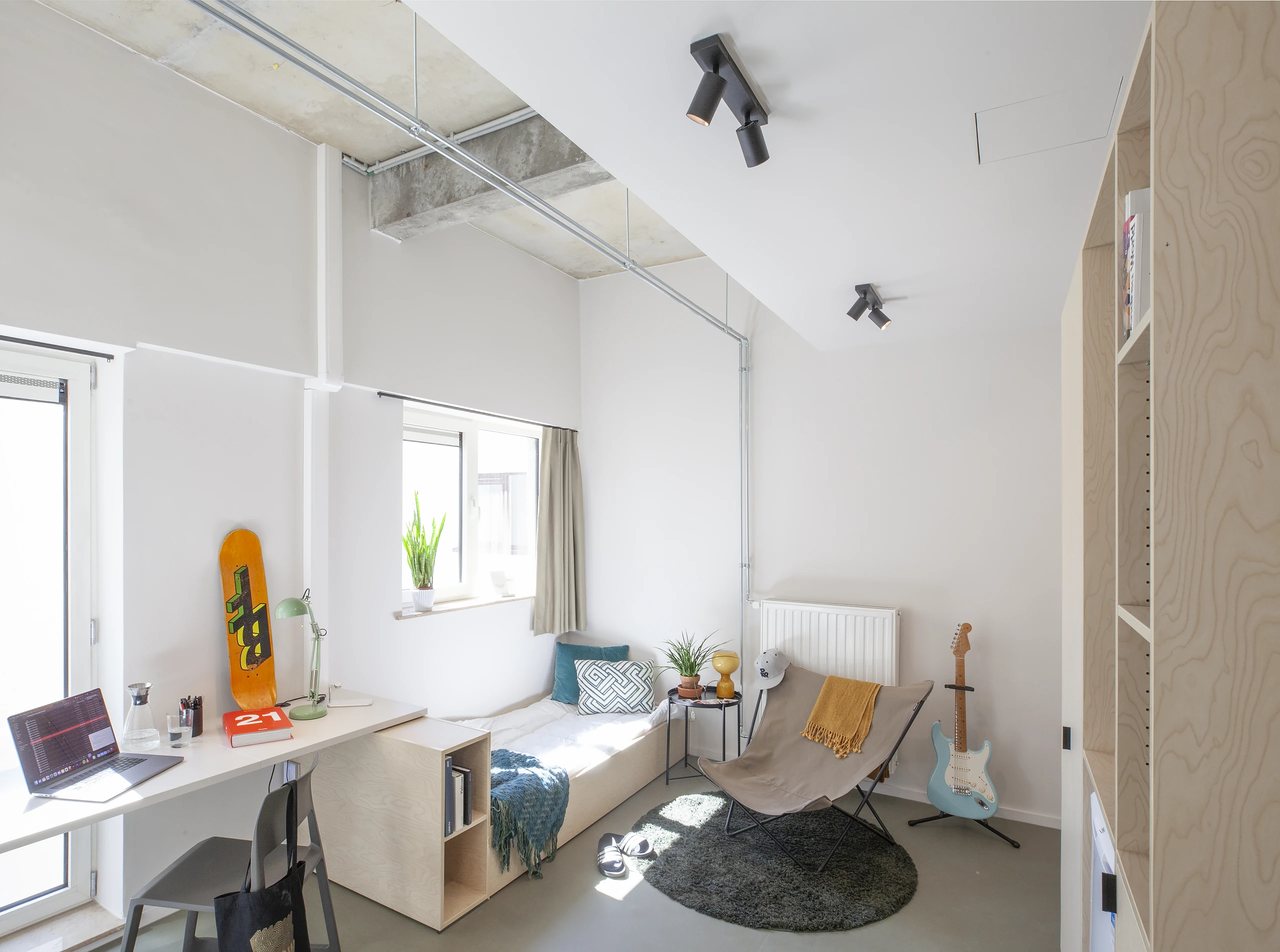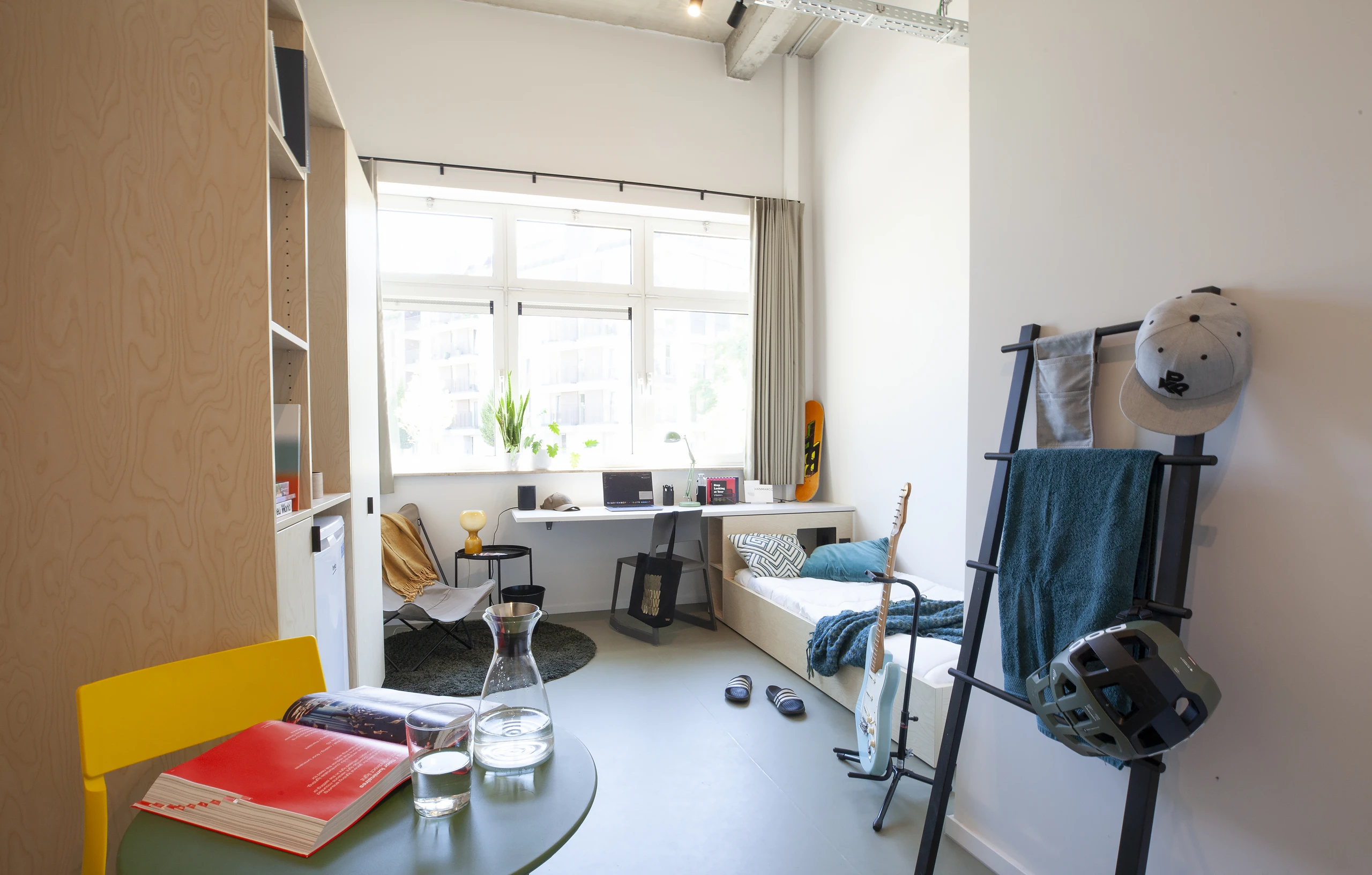- Location: Hasselt, Belgium
- Program: Student housing
- Area: 9.200 m²
- Year: 2023
- Status: Realized
Situated just outside Hasselt’s inner ring road, close to the canal, stands the transformed former boarding school at the juncture of Armand Hertzstraat and Stokerijstraat. This building, part of a larger block, is nestled among residential structures and is adjacent to a communal park at its center, maintained by local residents. Recognizing the site’s potential and prime location, it has been repurposed into student housing with an emphasis on community engagement, diversity, and a high standard of living.
Previously, the structure appeared outdated, with its one-dimensional and fragmented design that limited the adaptability and efficient use of space. Spanning four levels connected by three stair cores, the original layout consisted of extended corridors leading to small rooms. Despite the emergence of modern edifices across the canal, this building held a distinct presence, primarily due to its red brick facades and multifaceted architectural elements.
During the renovation, sustainability was a paramount consideration. The underlying principle was clear: extending a building’s functional lifespan inherently promotes sustainability. In light of this, while faced with certain structural challenges, the majority of the original materials and design elements were retained. Areas within the building that once seemed restrictive underwent a significant transformation. For instance, sections previously partitioned into three small rooms have been reconfigured into two spacious student accommodations, each equipped with individual sanitary facilities. The building’s existing concrete framework was repurposed, merging once-isolated areas to form communal zones for student interaction.
Externally, the revamp is both subtle and strategic. The core structure remains predominantly unchanged, with focused expansions to enhance its functionality and aesthetic appeal. On one hand, a precise extension mimics an existing wing but culminates in a sharp architectural feature, offering a definitive endpoint to the structure. On the other hand, a ‘topping’ technique extended the existing third level uniformly across the building. All facades received a unifying coat of soft white paint, seamlessly blending the old with the new and allowing the edifice to integrate more harmoniously with its surroundings. An external highlight is the facade artwork, inspired by the nearby canal and crafted by the Italian artist Roberto Ciredz. This artistic intervention offsets the building’s geometric rigidity with flowing, organic patterns, adding visual interest and balance.
Today, the revitalized building provides 161 student rooms of diverse sizes, spacious common areas for collaborative activities, a communal kitchen, and various informal spaces strategically distributed throughout. The melding of historic architecture with contemporary student housing needs, all set within the vibrant urban fabric of Hasselt, has been successfully achieved.

